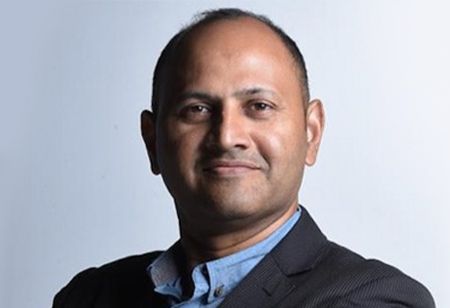
Prince Joseph, CIO of SFO Technologies, shares his insights in an exclusive interview with Industry Outlook on key topics, including the challenges of integrating AI solutions, best practices for transitioning from legacy systems, and how CIOs balance rapid digital innovation with robust cybersecurity measures. As a business technology leader, Prince drives digital transformation by leveraging emerging technologies and innovations. His expertise spans Enterprise IT, covering Infrastructure, Software Engineering, Custom Applications Development, and more.
With organizations increasingly adopting AI, many face challenges in effectively integrating these technologies into existing frameworks. How can CIOs navigate these integration challenges while aligning AI solutions with business objectives?
Successfully integrating AI into an organization requires a tailored approach, as every company’s data architecture and business framework are unique. While hybrid environments (on-premises and cloud-based) dominate, data often exists in varying formats and silos. The first step is to understand the organization's current state and create a strategy for introducing AI that complements its existing architecture and aligns with business objectives.
Preparation is key. Before integrating AI, organizations must ensure their data is well-structured and accessible. Starting small, focusing on specific contexts, and scaling incrementally is often the best approach. AI outputs can deliver exceptional insights, but they are only as good as the data and preparation behind them.
Collaboration across cross-functional teams—business, operations, IT, and data—is essential to ensure alignment and validate AI's value. Moreover, legal compliance, ethics, and data protection must be considered from the outset. Addressing these challenges early ensures smooth integration and long-term success.
The shift to cloud computing has intensified, leading to significant data migration challenges.What best practices can CIOs adopt to ensure a smooth transition from legacy systems to cloud- based solutions?
The shift to the cloud varies across organizations, with some embracing full adoption and others navigating hybrid environments. The key is to identify solutions that are "cloud-ready" and align them with the organization’s specific business needs and operational context.
For organizations prioritizing global collaboration and access, the cloud provides unparalleled advantages in terms of scalability and connectivity. However, security, performance, and data protection must be integral to the transition strategy. For localized workloads, edge computing can ensure data remains closer to the source, enhancing performance and compliance.
Hybrid environments often remain the most practical solution, offering elasticity and scalability while balancing performance and cost. However, managing data integrity and compliance in such environments is a challenge, as cloud providers do not take full responsibility for securing data. Organizations must adopt layered security measures, apply best practices, and work with trusted partners to ensure a resilient architecture.
As cybersecurity threats grow more sophisticated, enterprises must rethink their digital transformation strategies. How can CIOs balance the need for rapid digital innovation with robust cybersecurity measures to protect sensitive data?
Security must be foundational to digital transformation strategies. With the attack surface expanding due to increasing threat vectors, organizations must start by addressing the weakest link—people. Ongoing security awareness programs are essential, educating employees on risks, best practices for managing credentials, and recognizing threats such as phishing.
Regulations provide a framework for minimum security measures, but organizations must go beyond compliance to ensure real-world protection. This includes robust monitoring and visibility across all layers of IT, from applications to IoT devices, ensuring that potential threats are detected and addressed in real time.
Adopting a zero-trust architecture is critical in today’s landscape, where BYOD, remote access, and multi-source traffic are common. Every user and device must be verified continuously. Real-time monitoring and event correlation further ensure that cybersecurity is proactive rather than reactive, allowing enterprises to innovate while maintaining robust data protection.
Looking ahead, how do you envision the role of CIOs evolving over the next five years in driving digital transformation and addressing emerging challenges in technology and business?
The CIO role will continue to evolve as a bridge between technology and business. With the democratization of technologies like AI, IoT, and blockchain, CIOs must focus on driving value by aligning innovation with strategic business goals. They must wear both the technology and business hats, orchestrating solutions that generate tangible outcomes.
As custodians of organizational data, CIOs will increasingly focus on cybersecurity and resilience. Protecting intellectual property and ensuring compliance across geographies will be pivotal. Additionally, CIOs will need to prioritize employee enablement by integrating tools that enhance productivity and engagement while automating mundane tasks.
Sustainability will also play a significant role. CIOs must align with organizational green goals, driving decisions that contribute to long-term benefits and environmental responsibility. This multifaceted approach will cement the CIO's role as a key driver of innovation, resilience, and sustainability in the enterprise.
We use cookies to ensure you get the best experience on our website. Read more...